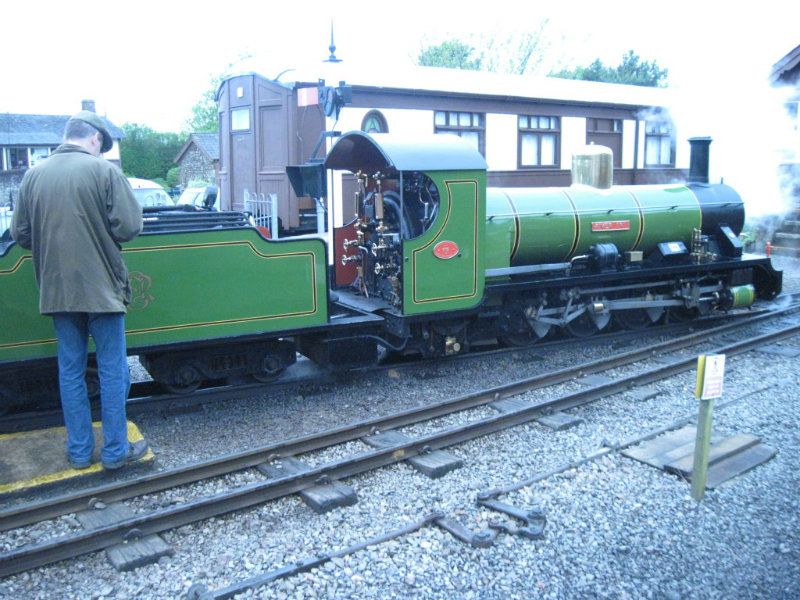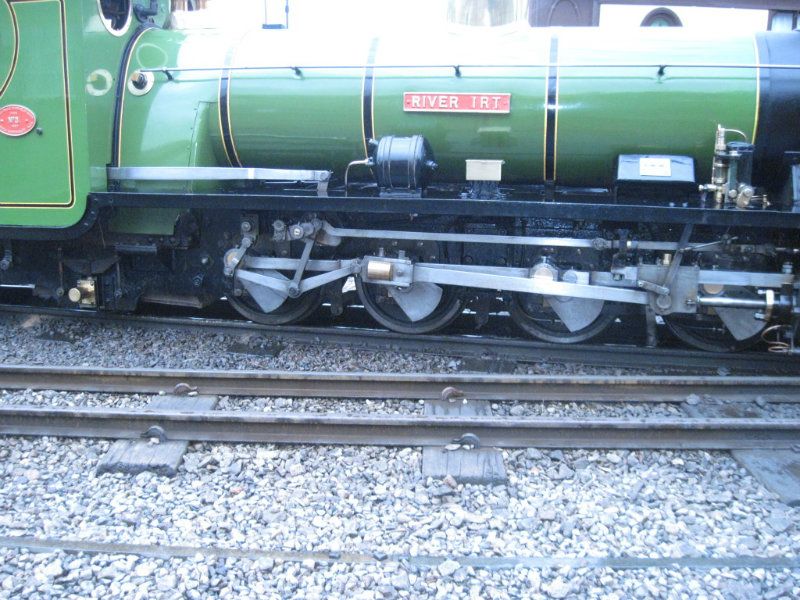This thread reminded me of Sir Arthur Heywood (1849-1916) a wealthy British engineer who tried with only minor success to interest the British Army in using 15-inch-gauge railways for logistics purposes.
He built a demonstration 15" gauge railway on his estate in Duffield Bank. The chassis of one of his engines—Muriel—an 0-8-0 tank engine, was later incorporated into the locomotive River Irt, an 0-8-2 locomotive of the 7-mile 15" gauge Ravenglass and Eskdale Railway in Cumbria, England. River Irt entered service on the R&ER in 1927 and is still going strong today.
The valve gear on River Irt is Heywood's modification of Brown valve gear, apparently made to eliminate Brown's use of a block sliding in a link and thus eliminate a wear problem. Heywood's gear uses only pin joints.
I'll attempt to attach a couple of pictures of River Irt.

